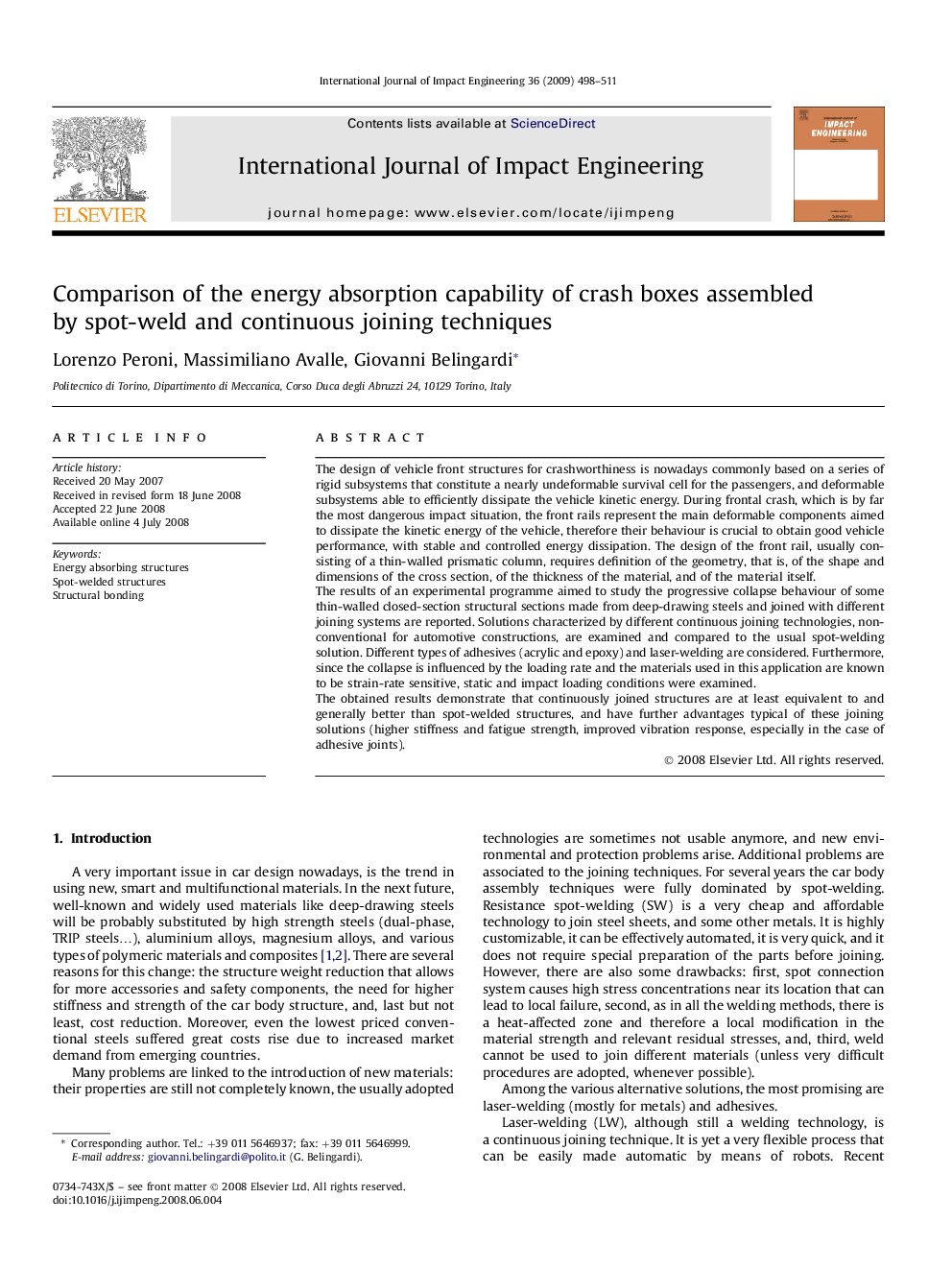| کد مقاله | کد نشریه | سال انتشار | مقاله انگلیسی | نسخه تمام متن |
|---|---|---|---|---|
| 779426 | 1464142 | 2009 | 14 صفحه PDF | دانلود رایگان |

The design of vehicle front structures for crashworthiness is nowadays commonly based on a series of rigid subsystems that constitute a nearly undeformable survival cell for the passengers, and deformable subsystems able to efficiently dissipate the vehicle kinetic energy. During frontal crash, which is by far the most dangerous impact situation, the front rails represent the main deformable components aimed to dissipate the kinetic energy of the vehicle, therefore their behaviour is crucial to obtain good vehicle performance, with stable and controlled energy dissipation. The design of the front rail, usually consisting of a thin-walled prismatic column, requires definition of the geometry, that is, of the shape and dimensions of the cross section, of the thickness of the material, and of the material itself.The results of an experimental programme aimed to study the progressive collapse behaviour of some thin-walled closed-section structural sections made from deep-drawing steels and joined with different joining systems are reported. Solutions characterized by different continuous joining technologies, non-conventional for automotive constructions, are examined and compared to the usual spot-welding solution. Different types of adhesives (acrylic and epoxy) and laser-welding are considered. Furthermore, since the collapse is influenced by the loading rate and the materials used in this application are known to be strain-rate sensitive, static and impact loading conditions were examined.The obtained results demonstrate that continuously joined structures are at least equivalent to and generally better than spot-welded structures, and have further advantages typical of these joining solutions (higher stiffness and fatigue strength, improved vibration response, especially in the case of adhesive joints).
Journal: International Journal of Impact Engineering - Volume 36, Issue 3, March 2009, Pages 498–511